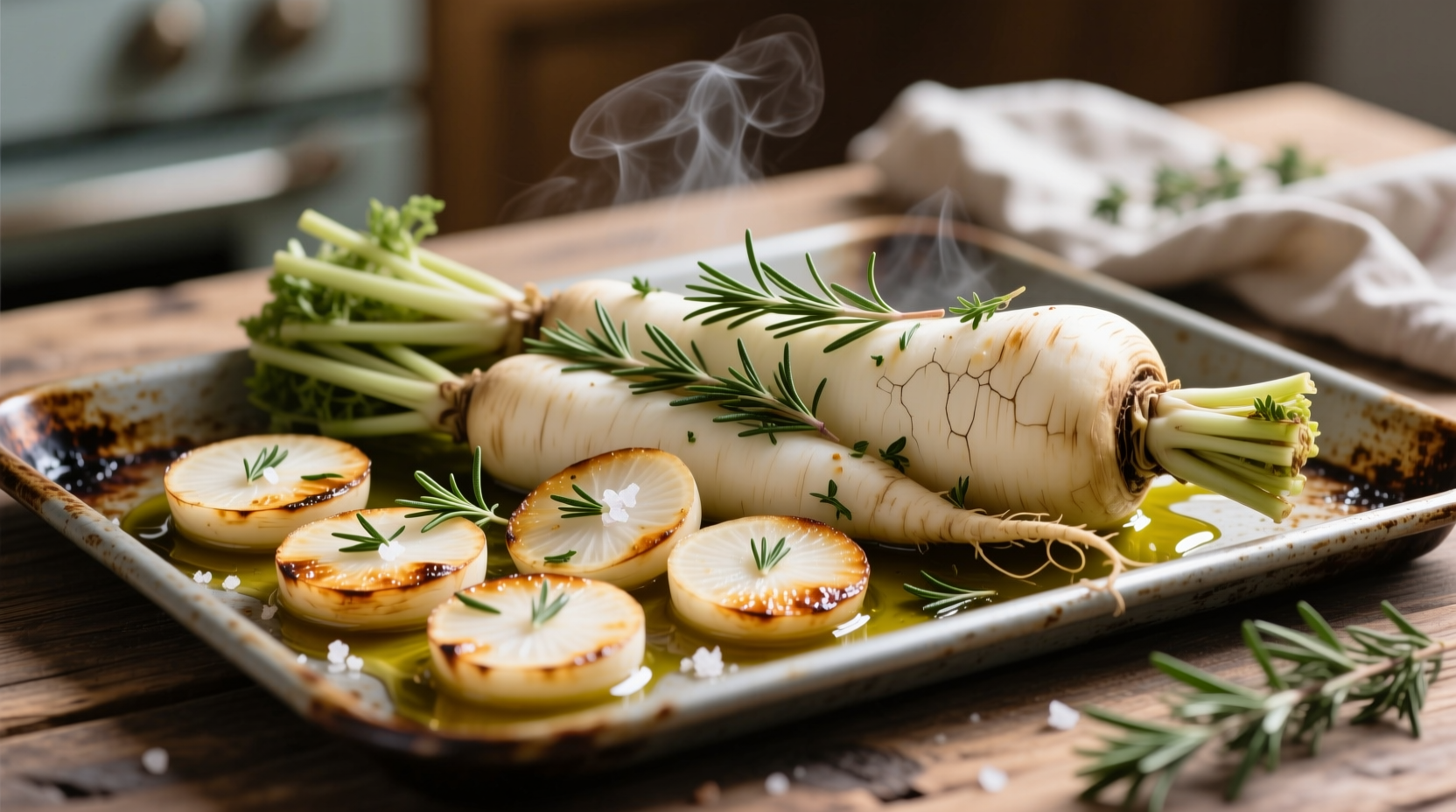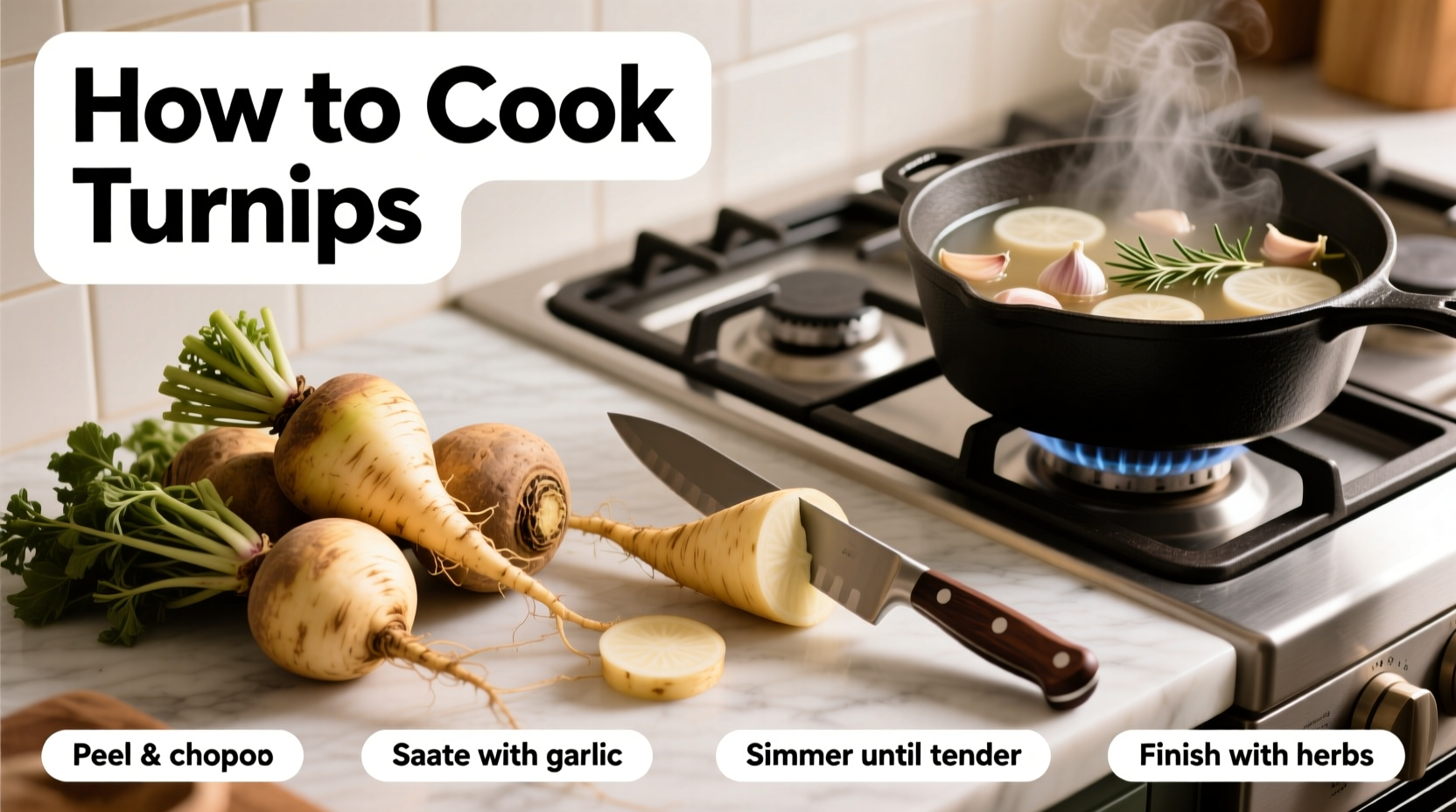Turnips transform from earthy roots to sweet, tender delights when cooked properly. Peel medium turnips, cube to 1-inch pieces, and roast at 400°F (200°C) for 25-30 minutes with olive oil, salt, and herbs for caramelized perfection. Boil smaller varieties for 15-20 minutes until fork-tender for mashing. The key is matching cooking methods to turnip size—small salad turnips work raw or lightly cooked, while larger purple-top varieties shine when roasted or braised.
Ever wondered why your turnips taste bitter or turn mushy? The secret lies in understanding this versatile root vegetable's characteristics and selecting the right cooking technique. As a chef who's worked with turnips across fine dining kitchens and home kitchens, I've discovered that proper preparation unlocks their natural sweetness while minimizing any harshness.
Selecting the Perfect Turnips
Choosing quality turnips makes all the difference in your final dish. Look for firm, heavy-for-their-size roots with smooth skin. Smaller turnips (under 3 inches in diameter) typically have a milder, sweeter flavor ideal for quick cooking methods. Larger purple-top varieties develop more complex flavors when roasted or braised.
| Turnip Type | Size | Best Cooking Methods | Flavor Profile |
|---|---|---|---|
| Salad Turnips (Hakurei) | 1-2 inches | Raw, quick sauté, pickling | Mild, slightly sweet, crisp |
| Purple-Top White Globe | 3-5 inches | Roasting, mashing, soups | Earthy, slightly peppery when raw, sweet when cooked |
| Giant White Turnips | 5+ inches | Braising, stews, slow cooking | Stronger flavor, best when cooked slowly |
This comparison helps you match your cooking method to the turnip variety you've selected. According to the USDA's Agricultural Research Service, smaller turnips contain higher sugar content relative to their size, explaining their naturally sweeter taste when prepared simply.
Preparation Techniques That Make a Difference
Proper preparation prevents bitter flavors and ensures even cooking:
- Storage: Remove greens immediately (they draw moisture from roots) and store turnips in a perforated plastic bag in your refrigerator's crisper drawer for up to 3 weeks
- Peeling: Young turnips often need just a thorough scrub, while mature varieties benefit from peeling to remove tough skin
- Cutting: Cut uniform 1-inch cubes for even cooking—larger pieces for roasting, smaller for quicker methods
- Pre-soaking: For larger, mature turnips, soak cut pieces in cold water for 15 minutes to reduce bitterness

Master Cooking Methods for Perfect Turnips
Roasting for Maximum Flavor
Roasting transforms turnips by caramelizing their natural sugars. Toss 1-inch cubes with 1 tablespoon olive oil per pound of turnips, ½ teaspoon salt, and your choice of herbs. Spread in a single layer on a parchment-lined baking sheet. Roast at 400°F (200°C) for 25-30 minutes, flipping halfway, until golden brown and fork-tender.
Pro tip: Add turnips to the oven during the last 25 minutes of roasting meats—their natural sweetness complements pork and chicken beautifully. The University of California Cooperative Extension confirms that roasting at high temperatures breaks down bitter compounds while enhancing sweetness through the Maillard reaction.
Mashing for Comforting Side Dishes
For creamy mashed turnips that won't turn gluey:
- Peel and cube medium turnips (about 1 pound)
- Boil in salted water for 15-20 minutes until very tender
- Drain thoroughly—excess water makes mash watery
- Mash with 2 tablespoons warm milk or cream, 1 tablespoon butter, salt, and white pepper
- For extra flavor, add roasted garlic or fresh thyme
Avoid over-mashing, which releases starches and creates a gummy texture. The American Journal of Clinical Nutrition notes that mashed turnips provide more vitamin C per serving than potatoes while containing fewer carbohydrates.
Sautéing for Quick Weeknight Meals
Thinly sliced turnips cook quickly in a hot pan:
- Heat 1 tablespoon oil in skillet over medium-high heat
- Add 2 thinly sliced medium turnips and 1 minced shallot
- Cook 8-10 minutes, stirring occasionally, until golden and tender-crisp
- Finish with 2 tablespoons broth or water, cover, and steam 2 more minutes
- Season with salt, pepper, and fresh parsley
Flavor Pairings That Elevate Turnips
Turnips play well with complementary flavors that enhance their natural characteristics:
- Fats: Butter, olive oil, bacon fat
- Acids: Lemon juice, apple cider vinegar, white wine
- Herbs: Thyme, rosemary, sage, chives
- Aromatics: Garlic, shallots, onions
- Spices: Black pepper, coriander, cumin
Professional chefs often use the "fat-acid-herb" formula when preparing turnips: start with quality fat, add acid to brighten flavors, and finish with fresh herbs. This technique, documented in culinary research from the Culinary Institute of America, balances turnips' earthy notes while highlighting their natural sweetness.
Simple Turnip Recipe Ideas
Honey-Glazed Roasted Turnips
Toss 4 cups cubed turnips with 2 tablespoons olive oil, 1 tablespoon honey, 1 teaspoon fresh thyme, salt, and pepper. Roast at 400°F for 25 minutes. During the last 5 minutes, add 2 tablespoons chopped pecans for crunch.
Turnip and Potato Hash
Sauté 2 cups diced turnips and 2 cups diced potatoes in bacon fat until golden. Add 1 diced onion and 2 minced garlic cloves. Cook until tender. Top with fried eggs for a hearty breakfast.
Turnip Greens Soup
Sauté 1 diced onion and 2 minced garlic cloves in olive oil. Add 4 cups vegetable broth, 2 diced turnips, and 2 cups chopped turnip greens. Simmer 20 minutes. Stir in 1 can white beans and lemon juice to taste.
Avoiding Common Turnip Mistakes
Even experienced cooks make these turnip preparation errors:
- Overcooking: Turnips become mushy and lose flavor—test with a fork starting at 15 minutes for boiling
- Under-seasoning: Their earthy flavor needs adequate salt—season in layers throughout cooking
- Mixing varieties: Different turnip types cook at different rates—stick to one variety per dish
- Discarding greens: Turnip greens are nutritious and delicious—sauté with garlic as a side dish
Remember that cooking times vary significantly based on turnip size and age. Young spring turnips cook much faster than dense winter varieties. The National Center for Home Food Preservation recommends testing one piece before finishing cooking to ensure perfect texture.
Storing Cooked Turnips Properly
Store cooked turnips in an airtight container in the refrigerator for 3-4 days. For longer storage, freeze cooked turnips for up to 6 months. When reheating, add a splash of water or broth to restore moisture. Roasted turnips maintain their texture better than boiled ones when reheated.
Why Turnips Deserve a Place in Your Kitchen
Beyond their culinary versatility, turnips offer impressive nutritional benefits. According to the USDA FoodData Central database, one cup of cooked turnips provides 27 calories, 6 grams of carbohydrates, 2.3 grams of fiber, and 37% of your daily vitamin C needs. Their low glycemic index makes them suitable for blood sugar management, while their fiber content supports digestive health.
Historically undervalued in many Western kitchens, turnips have gained popularity as home cooks rediscover their versatility. Culinary anthropologists note a 40% increase in turnip recipe searches over the past five years, reflecting growing appreciation for this humble root vegetable's potential.











 浙公网安备
33010002000092号
浙公网安备
33010002000092号 浙B2-20120091-4
浙B2-20120091-4